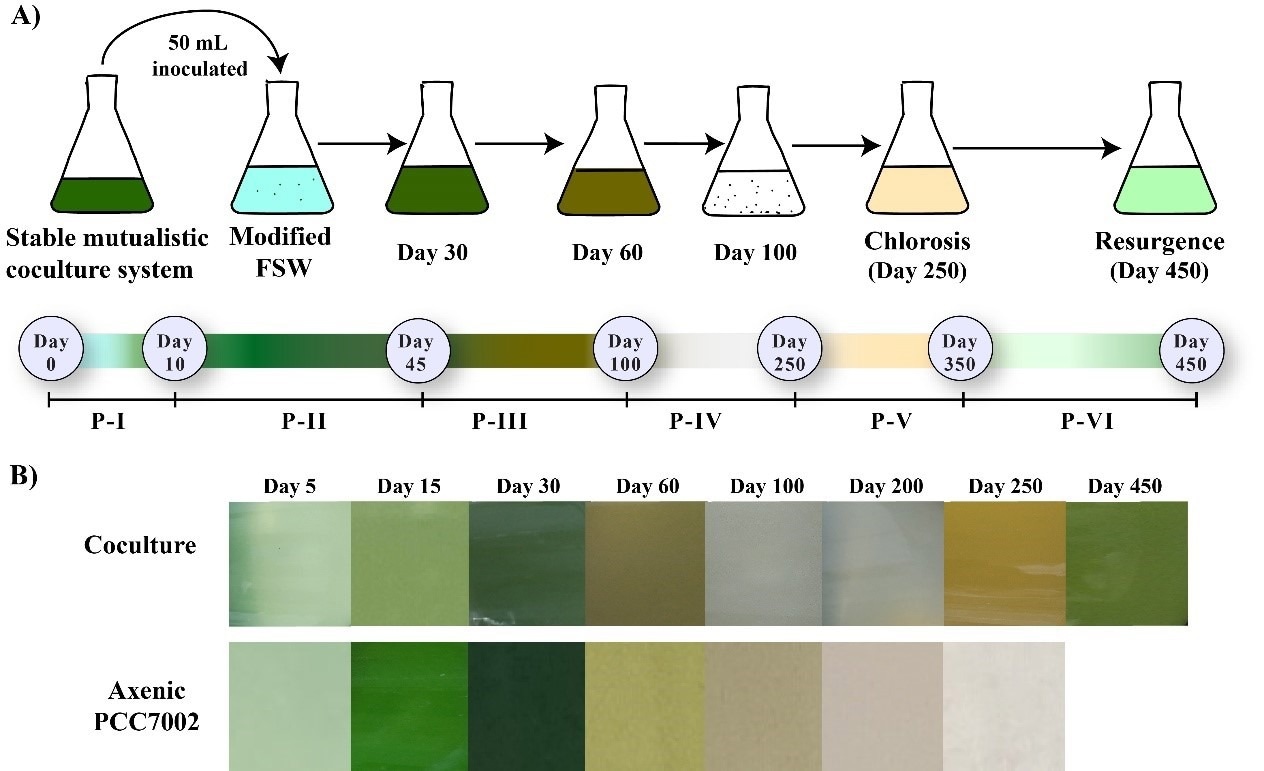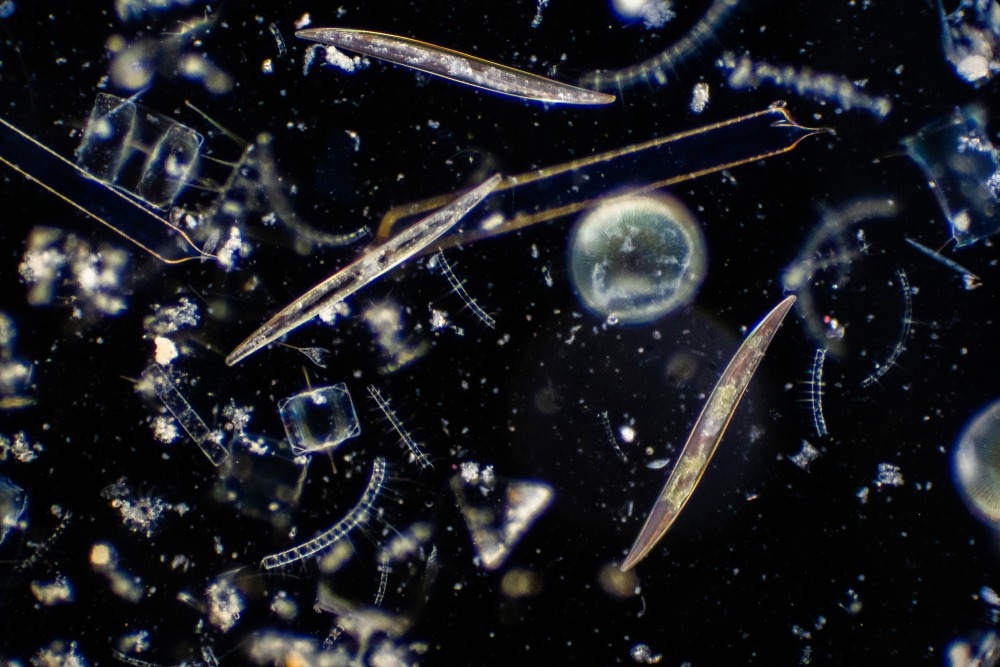Reviewed by Danielle Ellis, B.Sc.Oct 10 2022
A phytoplankton almost as old as Earth—3 billion years compared to Earth’s 4.5 billion years—holds secrets, including how it can endure famine in the waters with the fewest nutrients.
 Revival of Synechococcus health and the re-establishment of the Synechococcus-heterotrophic bacterial mutualism. Image Credit: Zenghu Zhang
Revival of Synechococcus health and the re-establishment of the Synechococcus-heterotrophic bacterial mutualism. Image Credit: Zenghu Zhang
The three phytoplankton species that make up a quarter of the primary production of the oceans are most geographically varied, with Synechococcus being found in both warm tropical seas and polar waters.
Heterotrophic bacteria, according to a study from the Qingdao Institute of Bioenergy and Bioprocess Technology (QIBEBT), Chinese Academy of Sciences (CAS), may be to blame for the phytoplankton’s continued survival.
The researchers discovered that Synechococcus and the bacteria that feed on them may have an innate predisposition toward mutualism and will go through considerable alterations to support each other’s survival. These experiments lasted for several years.
The marine algae Synechococcus and the heterotrophic bacterial population that it is connected with are inseparably linked.

Image Credit: Choksawatdikorn/Shutterstock.com
Science Advances reported their findings on September 30th, 2022.
In one of the earlier trials, the phytoplankton and its bacterial community survived for more than two years without any nutrient help from outside sources. These findings suggest microbial interactions that might support long-term Synechococcus development, but only under carefully monitored and reproducible experimental conditions, claims Prof. Yongyu Zhang from QIBEBT.
The ocean, on the other hand, is not a static habitat and undergoes changes in environmental elements like nutrients.
This study was carried out to understand how changes in environmental factors, such as the availability of external nutrients, will influence the mutualistic relationship between the Synechococcus and heterotrophic bacterial community.”
Yongyu Zhang, Professor, Marine Biology and Carbon Sequestration Group, Qingdao Institute of Bioenergy and Bioprocess Technology, Chinese Academy of Sciences
The researchers provided sterile inorganic nutrients to the established mutualistic coculture of Synechococcus and a varied bacterial community from their prior investigation to mimic the change in the marine environment. The mutually good, secure partnership of two years sagged but did not dissolve.
Our findings suggest that the availability of external nutrient sources disrupts the established mutualism, leading to the collapse of Synechococcus health. However, once the external nutrients were exhausted, over the next 450 days, Synechococcus and heterotrophic bacteria gradually re-established their metabolic mutualism under long-term coexistence that revived Synechococcus health.”
Shailesh Nair, Study Co-First Author and Postdoctoral Scholar, Qingdao Institute of Bioenergy and Bioprocess Technology, Chinese Academy of Sciences
The researchers discovered that the bacteria enabled nitrogen fixation, converting nitrogen for use in buoying the phytoplankton, which led to the re-established mutualism, by genetic analysis and tracing the nitrogen in the system.
During the process, bacterial community structure and functions underwent tremendous adjustments to achieve the driving effect, and the bacteria’s cogeneration of nitrogen, phosphorus, iron and vitamin B12 sustained Synechococcus’s prolonged healthy growth.”
Zenghu Zhang, Study Co-First Author and Associate Professor, Qingdao Institute of Bioenergy and Bioprocess Technology, Chinese Academy of Sciences
These results imply that mutualism may be a natural tendency of Synechococcus and heterotrophic bacteria that can be restored following environmental disturbance. This common, innate characteristic of Synechococcus and heterotrophic bacteria may represent their co-evolved survival strategies in nutrient-poor environments.
The long-standing query of Synechococcus tenacity may have been resolved, according to the researchers, but they now have a slew of additional queries they intend to address.
Zhang remarked, “Does this inherent mutualistic relationship apply to other algae as well? Can we boost algal growth by artificially constructing algal-friendly microbial communities? The potential regulation of algae-bacteria interactions may offer a novel way to increase algae-driven marine carbon sequestration.”
Source:
Journal reference:
Nair, S., et al. (2022). Inherent tendency of Synechococcus and heterotrophic bacteria for mutualism on long-term coexistence despite environmental interference. Science Advances. doi.org/10.1126/sciadv.abf4792